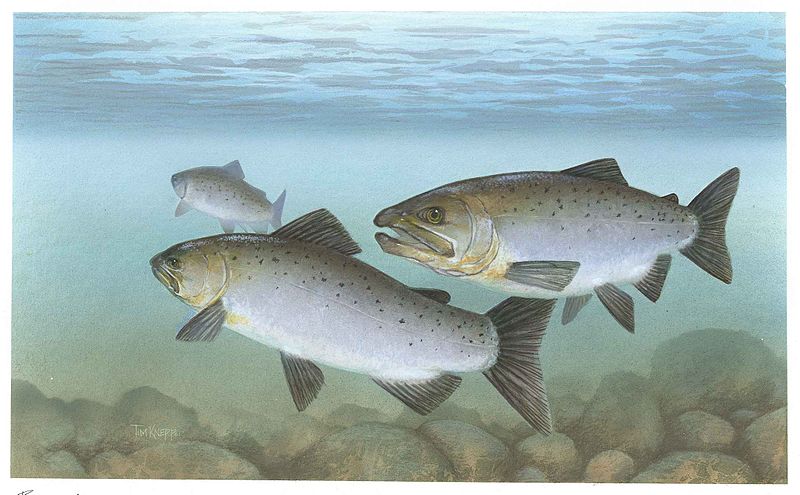A sweeping state survey of contaminants in sport fish that were hooked, netted or speared in 68 spots on the California coast underscores a lesson for seafood lovers: Choose well your next fillet.
In general, mercury levels in the fish – caught during 2009 and 2010 – were of “high concern,” particularly along the North and Central coasts, said a report released Thursday by the State Water Resources Control Board.
But while San Francisco Bay and other urban spots showed higher mercury pollution, the key driver of the contamination wasn’t location but type of fish.
Long-living predators such as sharks and some forms of rockfish were found to have the highest levels of methylmercury, the type that becomes concentrated in fish tissue, wherever they were caught.
In 25 of the 68 locations, some urban and some remote, the most contaminated species pulled from the water contained, on average, more than 0.44 parts per million of mercury.
The state recommends that children and women of child-bearing age avoid fish exceeding that level.
“When I got the results I thought a mistake had been made. There were red dots everywhere,” said Jay Davis, the study’s lead author, referring to fish found above the threshold.
“In hindsight it makes a lot of sense. Species at the top of the food chain – the highest-level predators – get the highest dose of mercury. The concentration goes up with every step,” he said.
Cleaner results in Southern California, he said, were largely due to the prevalence of different species, such as kelp bass, chub mackerel and white croaker.
Altering the menu
Davis, a senior scientist at the nonprofit San Francisco Estuary Institute, said the report shouldn’t steer consumers away from fish, which are a proven source of protein and beneficial omega-3 fatty acids.
“The message is to keep eating fish,” he said, “but you can really reduce your exposure to pollutants by eating fish that are lower in contaminants.”
Mercury pollution is caused by a variety of factors, from mining to upwelling from the depths of the ocean. Not all of the causes can be controlled on the local level.
Though rare, long-term mercury exposure in adults can impair vision and hearing, and damage motor skills and balance.
The metal’s effect on fetal brain development concerns experts most. The federal government says pregnant women, nursing mothers and young children should completely avoid four high-mercury fish – swordfish, king mackerel, shark and tilefish.
Industry skepticism
A spokesman for a seafood trade group said he was surprised that California researchers had “high concern” about fish near the 0.44 parts per million mercury level.
The threshold that gives the Food and Drug Administration the authority to pull fish from store shelves is 1 part per million.
“The levels we’re talking about really aren’t a concern when we’re talking about the normal consumption of seafood,” said Gavin Gibbons, spokesman for the National Fisheries Institute. “Sometimes studies like this feed into an unnecessary concern about mercury in seafood.”
The report looked at 3,483 fish representing 46 species and is part of a series of surveys of ocean and freshwater fish across the state.
Besides mercury, the only contaminant that was found at a level that could pose health risks were PCBs, which can cause cancer and liver damage, among other problems.
At five of the 68 locations, the most contaminated fish species had a level of PCBs that the state considers a concern – an average exceeding 0.12 parts per million. The FDA threshold for PCBs is 2 parts per million.
The state may use the results to publish consumer guidelines on safe fish consumption and in plans to clean waterways.




